
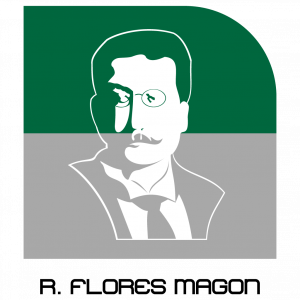
Metro R. Flores Magón is an unusual station. For regular transit riders, it acts as an intermediate point between the Eje 1 Norte stations to the west, and the northeast stations that will unfold in a long diagonal ending in Ecatepec. That’s pretty far off in Estado de México.
The station is named for Ricardo Flores Magón (see below). But the funny part is, no one is really sure why. There is no neighborhood, street, walkway, hospital, church, government office, park, school, or place of interest in the area making reference to the revolutionary anarchist or his brothers. The Calzada named for Magón begins at the Cuitlahuac Glorieta just about 3.5 kms west/northwest of here. That’s not even close to walking distance. (The Metrobús station of the same name, on Line 3, is still further west, in the Colonia Guerrero. It’s just south of the Calzada on Avenida Guerrero.)
The station was originally to be named for the Gran Canal. In fact, the southern reaches of the linear park are within a few minutes walk. Observant passengers will see just some of the park out the north side windows of the train as it emerges from the underground and passes the San Lazaro Station. Metro R. Flores Magón is one of the least-busy stations in the system. It’s sometimes noted as the least busy. This can vary by season and year.
To the north is the Colonia Revolución. To the south are the westernmost parts of the giant Colonia Moctezuma. Both are important communities in Venustiano Carranza.
Cipriano Ricardo Flores Magón (1874–1922) was an anarchist and social reform activist, and an important participant in the movement leading up to the Mexican Revolution. His followers were Magonistas. Magón was born in Oaxaca, to Zapotec and Mestiza parents. He early began reading anarchist literature, but also Karl Marx and Henrik Ibsen. A major force in the Partido Liberal Mexicano, he helped to organize the Industrial Workers of the World (IWW) and edited a newspaper aimed squarely at destabilizing the Porfirio Díaz regime. The threats to his liberty became so great that he fled to the USA in 1904 and never returned. He died imprisoned after being charged with sedition under the Espionage Act of 1917. He was convicted and sentenced to 20 years for "obstructing the war effort," a violation of the Espionage Act of 1917. His remains only finally repatriated in 1945. Magón was interred in the Rotunda of Illustrious Persons in Mexico City.
 unidad_de_orientacion@metro.cdmx.gob.mx
unidad_de_orientacion@metro.cdmx.gob.mx
 5627 4950 / 5627 4741
5627 4950 / 5627 4741
 https://www.metro.cdmx.gob.mx/
https://www.metro.cdmx.gob.mx/

Nearest at 0.41 kms.
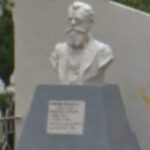
Nearest at 0.73 kms.
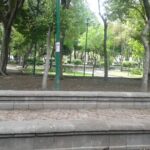
Nearest at 0.79 kms.
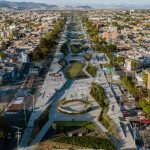
A third stage in the linear park emerges to bring the Canal over the top. . .
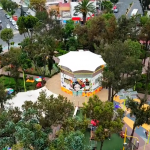
The Colonia Romero Rubio radiates out from the Glorieta Plaza Africa...
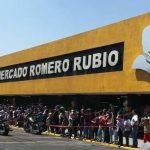
A gigantic market for one of East Mexico City's finest neighborhoods...
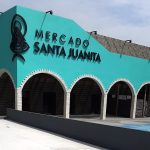
One of Venustiano Carranza's best-looking public markets...
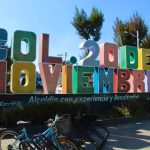
One of Mexico City's newest parks and recreation areas...